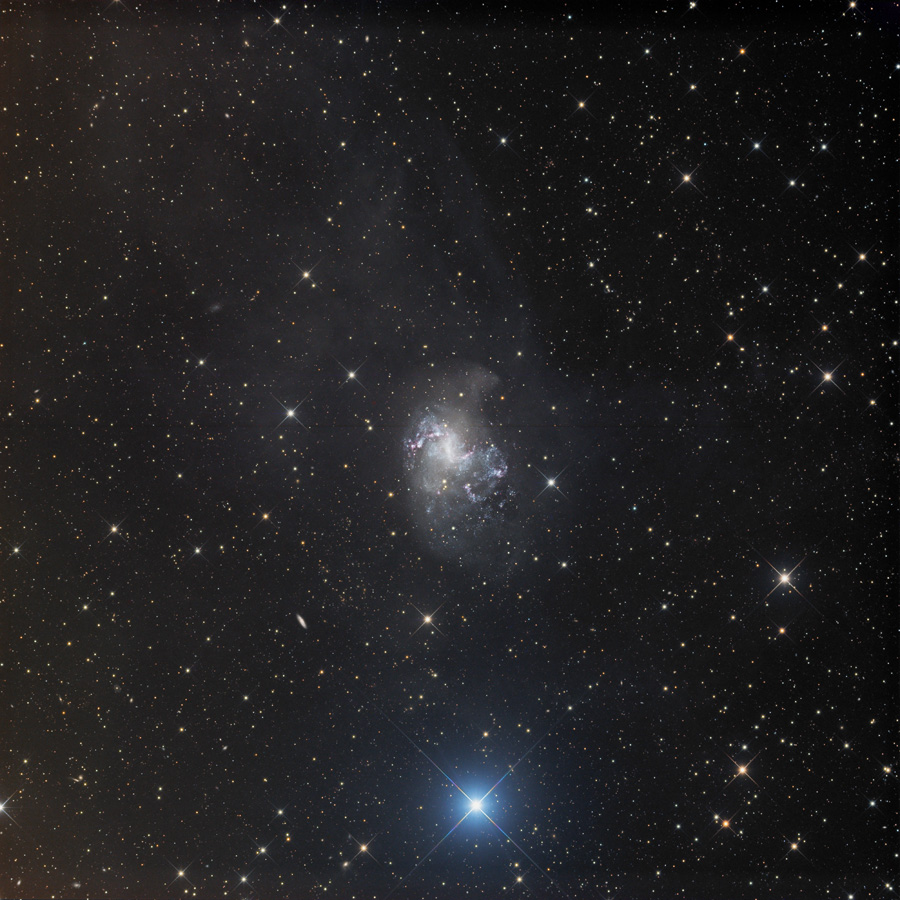Amateur Detection of Light Echoes from Supernova 1987a
http://www.rolfolsenastrophotography.com
Copyright: Rolf Wahl Olsen
I have now made a couple of better images of the Light Echoes from Supernova 1987a.
This image shows what I believe is the first amateur detection of light echoes from SN1987a - 33 years after the event.
1: Colour animation of 8 years expansion of the light echoes:
https://www.rolfolsenastrophotography.c ... -3qZNGWP/A
2: An illustration of the supernova location and expanding light sphere:
https://www.rolfolsenastrophotography.c ... -kBQ4vcX/A
All images, cropped and full size, are available here:
https://www.rolfolsenastrophotography.c ... nova-1987a
The light echoes are produced when the initial flash from SN1987a is subsequently reflected off interstellar dust as light travels outward from the event. Direct light from the supernova was observed on Earth in 1987, and we then see light reflected from dust in the interstellar space arriving later because it has travelled further to reach us.
The animation was created by subtracting two Luminance images taken almost 8 years apart, on 24th Oct 2012 and 21st Sep 2020 respectively, in order to create a difference image which was then superimposed on a regular colour image of the area. The expanding light echoes appear as roughly circular concentric arcs, centered on SN1987a's location. This clearly shows how they have expanded during the 8 years.
The echoes also appear to be moving outwards at superluminal speed: With a shift of ~47 pixels in the image, and an image resolution of 0.764"/pixel, the movement corresponds to around 28 light years at the distance of the Large Magellanic Cloud where the supernova occurred (163,000 light years away). This is clearly much faster than the speed of light given there are only 8 years between the images. This apparent superluminal speed is only an illusion though, and does not represent the actual speed of the outward travelling light.
Image details:
Taken from my observatory in Auckland, New Zealand
October 2012:
Exposure: LRGB 83:67:27:27m, total 3hrs 24mins @ -30C
Telescope: Homebuilt 10" f/5 Serrurier Truss Newtonian
Filters: Astrodon LRGB E-Series Gen 2
September-November 2020:
Exposure: L 65m, total 1hr 5mins and H-Alpha 435m, total 7hrs 15mins @ -25C
Telescope: Homebuilt 12.5" f/4 Serrurier Truss Newtonian
Camera: QSI 683wsg with Lodestar guider
Filters: Astrodon 3nm H-Alpha and LRGB E-Series Gen 2
 Ngc7497 Lrgb old image reworked with new lrgb (290':130':90':150') from T2 Chilescope. by gc.iaffaldano, su Flickr
Ngc7497 Lrgb old image reworked with new lrgb (290':130':90':150') from T2 Chilescope. by gc.iaffaldano, su Flickr Ngc7497 Lrgb old image reworked with new lrgb (290':130':90':150') from T2 Chilescope. by gc.iaffaldano, su Flickr
Ngc7497 Lrgb old image reworked with new lrgb (290':130':90':150') from T2 Chilescope. by gc.iaffaldano, su Flickr
 Comet C/2020 M3 (ATLAS) near Bellatrix by Marion Haligowski - Thanks for 1M Views!, on Flickr
Comet C/2020 M3 (ATLAS) near Bellatrix by Marion Haligowski - Thanks for 1M Views!, on Flickr NGC 1499_2020_RGBHALFA by Raul Villaverde, en Flickr
NGC 1499_2020_RGBHALFA by Raul Villaverde, en Flickr

